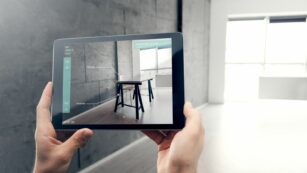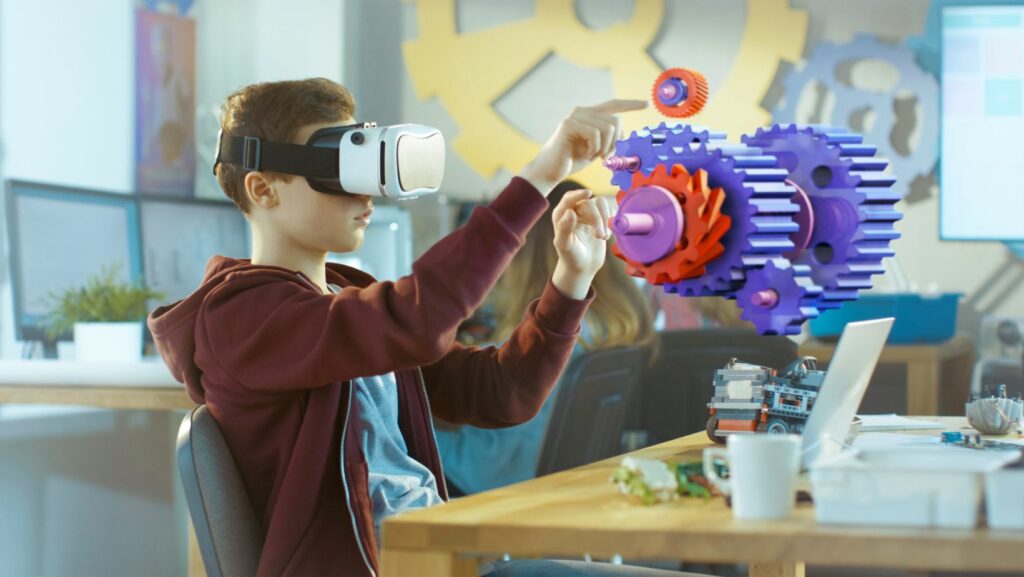Augmented reality (AR) is transforming how we interact with the world around us, blending digital components into our real-world environments in real-time. From enhancing everyday experiences to revolutionizing industries, AR’s potential is vast and varied. As technology advances, it’s becoming more accessible, paving the way for innovative applications that stretch beyond mere entertainment.
Benefits of Augmented Reality
Augmented Reality (AR) offers significant advantages across various sectors, seamlessly integrating digital information with the real world to enhance user experiences and operational efficiencies. This section explores the specific benefits of AR in the fields of education and retail.
Enhanced Learning and Education
 Augmented Reality transforms traditional learning environments by introducing interactive and immersive educational experiences. By overlaying digital information onto physical objects, students can engage with complex subjects in a more intuitive way. For example, in anatomy classes, AR enables students to view three-dimensional representations of the human body, improving their understanding and retention of the subject matter. Additionally, AR applications in history lessons allow students to visualize historical events as if they’re unfolding in front of them, thereby increasing engagement and making learning more dynamic.
Augmented Reality transforms traditional learning environments by introducing interactive and immersive educational experiences. By overlaying digital information onto physical objects, students can engage with complex subjects in a more intuitive way. For example, in anatomy classes, AR enables students to view three-dimensional representations of the human body, improving their understanding and retention of the subject matter. Additionally, AR applications in history lessons allow students to visualize historical events as if they’re unfolding in front of them, thereby increasing engagement and making learning more dynamic.
Revolutionizing Retail and E-commerce
In the retail sector, AR significantly enhances the shopping experience by allowing customers to visualize products in their own space before making a purchase. This technology is particularly useful in furniture and decor stores where customers can see how a piece of furniture would look in their home through AR-enabled apps. For instance, companies like IKEA offer apps that place true-to-scale 3D models of furniture into users’ rooms using AR, helping customers make better purchasing decisions.
Impact of Augmented Reality on Healthcare
Surgeons and Medical Training
 Surgeons use AR to improve the precision of surgeries. By overlaying crucial data such as blood flow and anatomical structures directly onto the patient’s body during operations, AR helps surgeons perform complex procedures with higher accuracy and lower risk. For example, AR headsets enable real-time visualization of patient anatomy, which can lead to more effective and less invasive surgeries.
Surgeons use AR to improve the precision of surgeries. By overlaying crucial data such as blood flow and anatomical structures directly onto the patient’s body during operations, AR helps surgeons perform complex procedures with higher accuracy and lower risk. For example, AR headsets enable real-time visualization of patient anatomy, which can lead to more effective and less invasive surgeries.
Medical training benefits greatly from this technology as well. Medical students using AR can interact with 3D human body models, providing a depth of understanding that textbooks and videos cannot match. Critical procedures like inserting a central venous catheter can be practiced with AR simulations to hone skills safely before applying them in live settings.
Patient Care and Management
Augmented reality transforms patient care by facilitating more engaging and personalized treatment plans. AR applications assist patients in understanding their health conditions by visualizing their diseases and the potential impact of various treatments. Such applications make abstract medical data tangible, thus helping patients grasp complex information quickly and more effectively.
Moreover, AR guides patients through rehabilitation exercises using gamification. For instance, a stroke rehabilitation app may use AR to create stimulating visual exercises tailored to a patient’s specific therapeutic needs, leading to higher engagement and better outcomes.
Augmented Reality in the Workplace
Augmented Reality (AR) is revolutionizing workplace environments by enhancing training, productivity, and collaboration. This technology proves essential in adapting modern workplaces to be more efficient and interconnected.
Improving Training and Skills Development
 Augmented reality introduces a dynamic approach to training and skills development across various industries. By integrating AR into training programs, employees can engage with realistic simulations, which significantly aids in understanding complex procedures and tasks. For instance, in manufacturing, AR can demonstrate machinery operations interactively, reducing the learning curve and minimizing risks associated with hands-on training. Companies like Boeing have utilized AR to assist technicians in aircraft assembly, leading to a 25% reduction in time required to complete tasks.
Augmented reality introduces a dynamic approach to training and skills development across various industries. By integrating AR into training programs, employees can engage with realistic simulations, which significantly aids in understanding complex procedures and tasks. For instance, in manufacturing, AR can demonstrate machinery operations interactively, reducing the learning curve and minimizing risks associated with hands-on training. Companies like Boeing have utilized AR to assist technicians in aircraft assembly, leading to a 25% reduction in time required to complete tasks.
Enhancing Productivity and Collaboration
AR enhances productivity by overlaying digital information onto the physical world, providing employees with real-time data essential for decision-making. For example, AR applications can display schematic diagrams over equipment, helping technicians perform maintenance without consulting manuals, thus speeding up the process. Additionally, in fields like architecture and engineering, AR allows team members to visualize project modifications in real-time, promoting effective collaboration even when participants are in different locations.

